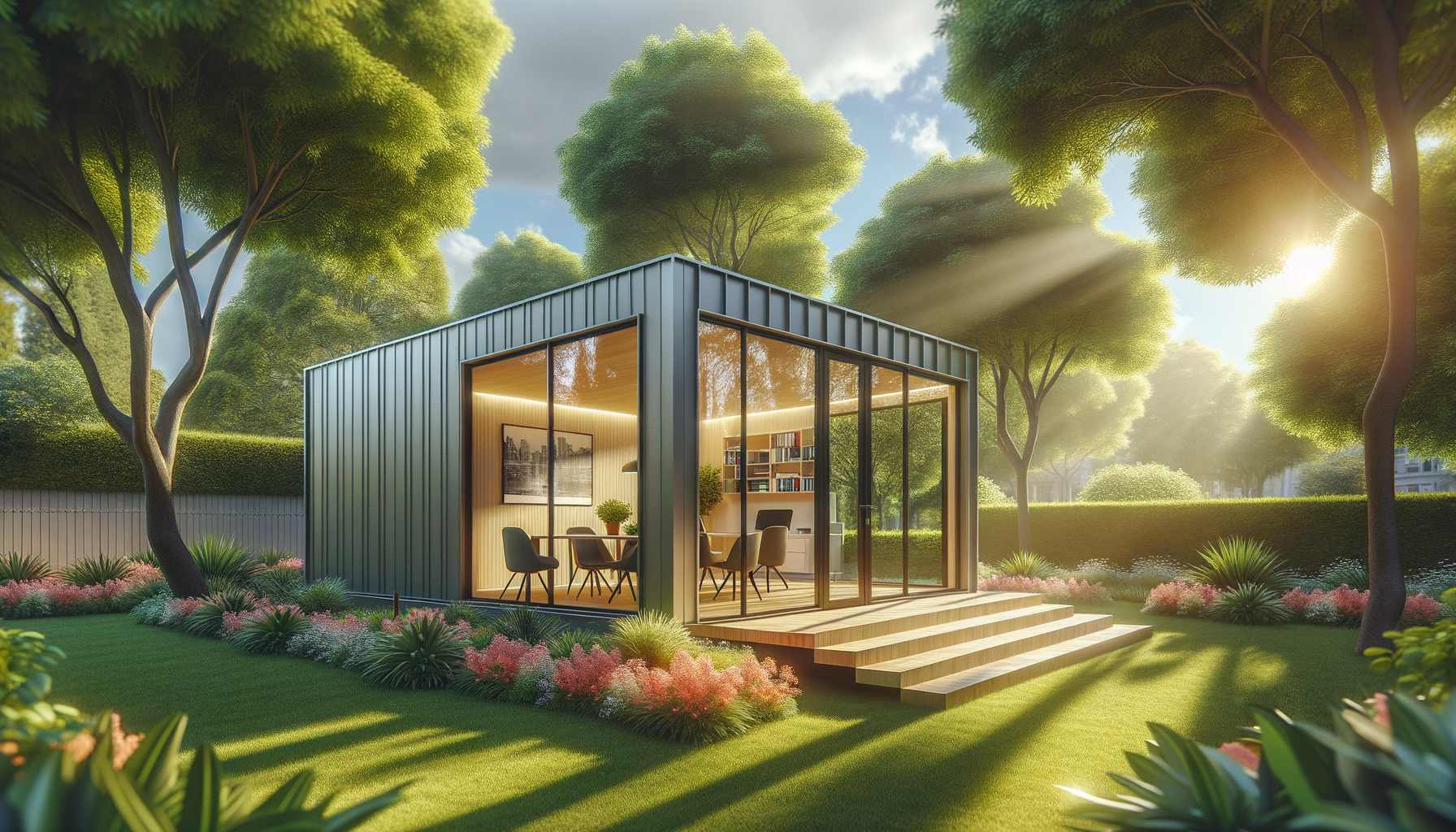Understanding the Prefab Revolution
The concept of prefab, or prefabricated, structures has revolutionized the way we think about construction and space utilization. Prefab backyard offices are a testament to this transformation, offering a seamless blend of convenience and functionality. These structures are pre-manufactured in a factory setting and then transported to the site for assembly. This method not only reduces construction time but also minimizes on-site disruption. The rise in demand for prefab offices is largely due to their adaptability and the increasing need for dedicated workspaces at home. As remote work becomes more prevalent, the need for a quiet, separate space to focus has grown. Prefab offices meet this demand by providing a quick and efficient solution.
Moreover, the prefab approach allows for a high degree of customization. Homeowners can choose from a variety of designs and materials, ensuring that their backyard office complements the existing landscape and architectural style. This customization extends to the interior as well, where features such as insulation, lighting, and storage can be tailored to fit specific needs. The efficiency of prefab construction is also reflected in its environmental impact. By manufacturing components in a controlled environment, waste is significantly reduced, making prefab offices a more sustainable choice.
Design and Aesthetics: Blending with Nature
One of the appealing aspects of a prefab backyard office is its ability to blend harmoniously with the natural surroundings. Modern designs often incorporate elements such as large windows, natural wood finishes, and green roofs to create a seamless transition between the built environment and nature. This connection to the outdoors not only enhances the aesthetic appeal but also contributes to the well-being and productivity of its occupants. Studies have shown that exposure to natural light and views of greenery can significantly improve mood and focus, which are crucial for effective work.
In terms of design, prefab offices offer a range of styles from minimalist and sleek to rustic and cozy. This variety ensures that there is an option for every taste and preference. For those who value sustainability, many prefab office models are designed with eco-friendly materials and energy-efficient systems. Features such as solar panels, rainwater harvesting systems, and energy-efficient insulation are increasingly common, reflecting a growing awareness of environmental responsibility.
Additionally, the compact nature of these offices makes them an ideal choice for small backyards, where space is at a premium. Their modular design allows for easy expansion, should the need arise, making them a flexible long-term investment.
Cost Considerations and Investment Value
While the initial investment in a prefab backyard office can be significant, it is important to consider the long-term value it brings. The cost of these structures varies widely depending on the size, materials, and level of customization. However, when compared to traditional home extensions or renovations, prefab offices often prove to be more cost-effective. The reduced construction time and labor costs contribute to overall savings, making them an attractive option for budget-conscious homeowners.
Beyond the immediate financial outlay, a prefab office can increase the value of a property. As more people seek homes with dedicated workspaces, having a ready-made office in the backyard can be a strong selling point. This potential for increased property value should be considered when evaluating the investment.
Furthermore, the ongoing operational costs of a prefab office are typically lower than those of a traditional home office. Energy-efficient designs and sustainable materials contribute to reduced utility bills, providing additional savings over time. For those who work from home regularly, the convenience and efficiency of a dedicated workspace can also lead to increased productivity, which can have a positive impact on professional success and earning potential.
Installation Process and Timeframe
One of the major advantages of prefab backyard offices is the speed and simplicity of the installation process. Unlike traditional construction projects, which can take months to complete, a prefab office can be up and running in a matter of weeks. The process begins with selecting a design and customizing it to fit specific requirements. Once the design is finalized, the components are manufactured in a factory setting, ensuring precision and quality control.
The pre-manufactured components are then delivered to the site, where they are assembled by a team of professionals. This assembly process is typically quick and efficient, with minimal disruption to the surrounding area. The controlled environment of the factory ensures that the components are built to exact specifications, reducing the likelihood of errors or delays during installation.
Additionally, prefab offices often require less groundwork and site preparation than traditional buildings, further speeding up the process. This efficiency is particularly beneficial for those who need to set up a workspace quickly, such as in response to a sudden shift to remote work. The streamlined installation process not only saves time but also reduces stress, allowing homeowners to focus on setting up their new office space.
Future Trends and Innovations
The future of prefab backyard offices is bright, with ongoing innovations poised to make these structures even more appealing. Advances in technology are enabling greater customization and functionality, with smart home integrations becoming increasingly common. Features such as automated lighting, climate control, and security systems can be seamlessly incorporated into prefab offices, enhancing convenience and comfort.
Additionally, as the demand for sustainable living solutions grows, prefab offices are likely to become even more eco-friendly. Innovations in materials and construction techniques are making it possible to reduce the carbon footprint of these structures further. For instance, the use of recycled materials and the incorporation of passive solar design principles can significantly enhance the environmental performance of prefab offices.
Looking ahead, the trend towards flexible and adaptable living spaces is expected to continue. Prefab offices, with their modular design and ease of expansion, are well-positioned to meet this demand. As more people embrace remote work and the need for dedicated home workspaces grows, prefab backyard offices are set to play a pivotal role in shaping the future of residential architecture.




Leave a Reply